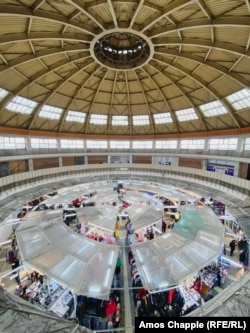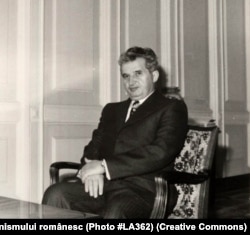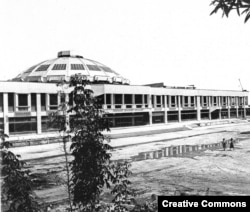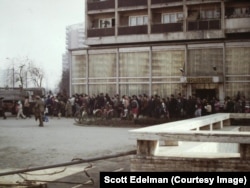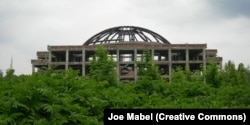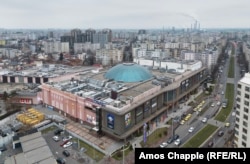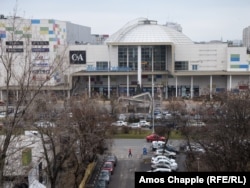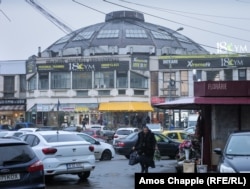A series of grand structures built ostensibly to feed the population of Bucharest survived the collapse of communism in the Romanian capital, where some now stand as symbols of the free market.
This 1994 photo shows the unfinished shell of one of 11 buildings throughout Bucharest that locals acidly referred to as "hunger circuses" during the grinding final years of life under Romania's communist dictator Nicolae Ceausescu.
The structures were officially branded "Agro-Industrial Commercial Complexes" and were intended to be a one-stop shop for Bucharest residents' food needs and provide ready-made meals. Several of the structures featured distinctive domes that resembled the design of a circus.
Ceausescu said of the food distribution hubs: "People -- primarily women after they finish work -- stop by here to collect a container of food, then they simply take it home, heat it up, and eat it."
One Bucharest local recalled the state-run food centers being touted as a way to save on the work of cooking and shopping and "allow the female comrades to also have time for children, family, education, a book, and a movie."
For the Romanian state, having a handful of gigantic food centers cut costs on distribution to thousands of workplace canteens and increased control over people's lives.
What might have sounded appealing in theory to those "comrades" burdened with work and childcare swiftly declined into a disaster in practice as the already familiar socialist miseries of food shortages and endless queues permeated the complexes.
In 1981, amid an unrelenting drive to pay off all of Romania's foreign debts, Ceausescu imposed a "rational eating program" on the Romanian people that limited their calorie intake and rationed basic foodstuffs. Locals too busy to line up for food in the morning arrived to cavernous food distribution centers all but empty by the afternoon. The term "hunger circus" soon became the de facto name for the complexes.
After the bloody overthrow of the Ceausescu regime in 1989, construction of the hunger circuses was abandoned with only two of the structures completed. The sites stood derelict until foreign investors spotted their potential amid the economic turmoil of 1990s Romania.
In 1999, a former hunger circus opened as Bucharest Mall, the first mall in Romania. The shopping center had been massively transformed from the communist-era building that served as its structural core but retained the glass cupola as its architectural centerpiece.
Several shopping centers followed, while other hunger circuses were demolished. In the eastern suburb of Pantelimon, one site has become a market for cheap imported clothes. Two fitness centers and a mixed martial arts gym also occupy the space in the notoriously tough Bucharest neighborhood.
One former hunger circus alongside Bucharest’s bustling Unification Square is privately owned but remains an unfinished hulk, populated only by hostile security guards who confront those who peek inside.
The Unification Square property was set to be converted into a shopping mall, but the developers reportedly ran out of money for the project in the 2010s.


